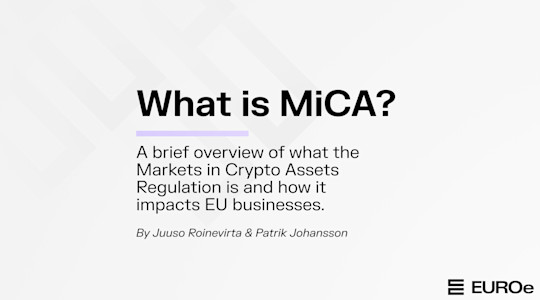
Blockchain, a neutral technology platform, has a long history of adverse selection. Bitcoin was first popularised by its use in the trade of illegal goods on Silkroad and other black markets. Ethereum’s first boom was bootstrapped by the ICO craze, which left many investors feeling scammed.
This historical backdrop has created an urge for regulators to ensure that the wild west of blockchain-based financial transactions is tamed. Some regulators have chosen to forcibly shape innovation to follow the moulds of the past. The Markets in Crypto Assets regulation, MiCA or MiCAR for short, is the European Union’s stab at taming the industry. However, their approach is very considerate and understanding of the potential the new technology can provide when harnessed well.
This article provides an overview of MiCA and its significance & implications for business. While we provide actionable information regarding how businesses should prepare for MiCA, this is not legal advice or recommendation. Each case is different, and how the law is applied in practice is based on years of court cases and additional rulings – something we do not yet have.
MiCA: at a glance
The first draft of MiCA was published in September 2020 [1] as part of the Digital Finance package, the EU’s strategic response to further the potential of digital financial innovation while mitigating its risks. The draft was received with varying responses from businesses operating in the sector and other financial services providers. On the contrary, the gradual development and discourse prompted by the draft created, in retrospect, an environment where industry participants had the opportunity to share information with relevant regulatory bodies, bringing optimism amid the risks of complete bans on topics such as bitcoin mining and DLTs.
The final version of the regulation was published in May 2023. It was published in the EU’s official journal in June – making it “official” – and entered into force on 29 June 2023. The final scope of the regulation applies to natural and legal persons and certain other undertakings – even when part of the activities are performed in a decentralised manner.
Scope
The full scope of MiCA is complex, but it can be rather accurately summarised as crypto-assets, real-world assets, electronic money tokens (EMT), and providers of crypto-asset-related services. EMTs are “all types of crypto-assets referencing a single official currency”.
As the regulation encourages using a “substance over form” approach when determining whether an asset falls within the regulation, we could even more simply say that everything that looks, feels, and smells like a financial asset or a currency is within the scope of MiCA (unless it explicitly is a financial instrument).
There are, however, a few important areas that fall outside of the scope of the regulation:
Whatever is governed by other legislative acts, notably financial instruments, deposits, funds, securitisation positions, non-life or life insurance contracts, pension products/schemes, and social security schemes. However, EMTs are still explicitly within the scope, even though they could be considered “funds”.
Crypto-assets that are “unique and not fungible”, including “digital art and collectibles” and “services or physical assets” such as “product guarantees or real estate”. However, fractionalised parts of such assets do not qualify.
“Digital assets that cannot be transferred to other holders”, such as loyalty schemes whose points can be exchanged for benefits only with the issuer/offeror and most likely souldbound tokens (SBTs).
If a crypto-asset service is “provided in a fully decentralised manner without any intermediary”, it also falls outside of the scope. However, we maintain it possible that a centralised interface provider may constitute a breach of full decentralisation.
Hardware or software providers of non-custodial wallets.
Importantly, MiCA is not the be-all and end-all of crypto asset regulation. As prominently stated in the regulation, “crypto-assets that fall under existing Union legislative acts on financial services should remain regulated under the existing regulatory framework, regardless of the technology used for their issuance or their transfer.”
Objectives
While all entities offering services within the scope of MiCA should also comply with anti-money laundering (AML) and countering the financing of terrorism (CFT) rules of the EU, the regulation also indicates – either explicitly and implicitly through its substance – the following objectives:
Addressing the fragmentation of the legal framework, i.e., improving legislative cohesion within the single market
Maintaining financial stability & market integrity as the financial and adjacent industries adopt blockchain-based technologies
Promoting technology-neutral fair competition & innovation of new financial services
MiCA: importance to businesses
MiCA presents an important shift from a previously murky and unclear regulatory landscape to a standardised one. Non-crypto enterprises that were previously investigating the utilisation of blockchain technologies in their business now have much stronger guarantees as to how their activities are regulated.
For example, loyalty-point systems have been clearly set on a technology-neutral platform; whether a grocery store chain implements its loyalty points with stamps on paper, in a private database, or using distributed ledger technology does not matter. Whether a business accepts electronic money on a prepaid card or uses a DLT-based EMT does not have implications for how the business operates from a regulatory perspective. This level of certainty and cohesion across the EU is extremely important for businesses of all sizes. It allows for confident innovation and trial & error to find competitive advantage and long-lasting positive impacts.
As an EU-wide regulation to be adopted within the whole European Economic Area, the regulation also enables better legal advice and support structures for any business that wants to experiment with DLT-based systems.
From a customer or investor perspective, the regulation also improves trust in enterprises implementing systems utilising crypto-assets, NFTs, or other DLT-based innovations due to clearer compliance standards and frameworks. For example, a user of EUROe can be as confident in their money as any other user of electronic money.
MiCA: implications to businesses utilising crypto-assets
MiCA breaks crypto-assets into roughly four categories; 1. asset-referenced tokens (ARTs); 2. electronic money tokens (EMTs); 3. other crypto assets; and 4. assets that are not within the scope of the regulation, such as unique & non-fungible assets (colloquially NFTs).
1. Asset-Referenced Tokens
Asset-referenced tokens, or ARTs, are crypto-assets that aim to maintain a stable in reference to another value or right (or a combination of such). ARTs can also reference currencies, but only if they do not fall under the scope of electronic money tokens.
In practice, we expect ARTs to be tokens that reference stocks, bonds, commodities, or even fractions of copyrights or patents. However, the issuer nor a CASP cannot grant interest on ARTs.
ARTs are issued by credit institutions or authorised issuers that have passed review by the national competent body. The issuers must publish a white paper, treat the token holders equally (unless otherwise agreed), and act in the best interests of the token holders. This practically means that the tokens are considered liabilities of the issuer, and the tokens will be senior to equity. As expected, the issuer’s marketing communications must be clearly identifiable and not misleading.
The issuers must also accurately & transparently disclose the number of ARTs in circulation and the value & composition of the assets backing them on at least a monthly basis. There are also own funds requirements and requirements for the complaints-handling procedures.
ARTs may be made available to the public and for trading only by the issuer or a third party with the written consent of the issuer. The third parties, when centralised, must have the right set of licences, processes, and compliance measures to offer ARTs for trading. The third parties, just like the issuer itself, cannot grant interest to the holders of ARTs. There are some exceptions to the trading of small issuances, enabling hobbyists & market soundings in practice.
All in all, the requirements placed on the issuer of an ART improve the consumer and investor protections of a token holder. MiCA makes ARTs a feasible investment for businesses, as assets secured by DLTs are subject to the same level of scrutiny and protection as “traditional” assets. Combined with the recent developments in tokenisation and other blockchain verticals, ARTs can unlock new potential for diversification and access.
Furthermore, if your business is thinking about experimenting with issuing ARTs, e.g., fractionalising some of the company stock or issuing corporate bonds, that is very much possible under the MiCA regulations. Luckily, there is plenty of room for innovation even prior to full commitment due to the exceptions for small-scale projects.
2. Electronic Money Tokens
Electronic money tokens, e-money tokens, or EMTs, are crypto-assets that aim to maintain a stable value in reference to one currency. They can only be issued and offered to the public by authorised credit institutions or electronic money institutions. In addition, upon the written consent of the issuer, they may be offered to the public or admitted to trading by a third party.
EMTs are deemed electronic money – a digital version of cash whose EU legislation dates back to 2009. As digital cash, there are no exemptions for small issuers of EMTs. The regulation clearly makes a distinction here against ARTs; no playing around with money.
EMTs must be redeemable in a 1:1 ratio against their reference currency, and the claim that the holders of EMTs have is senior to anything else. Issuers of EMTs must prominently state the conditions for redemption and have a redemption plan in place to honour the holders of the tokens.
The issuer, or a centralised third party, cannot grant interest on the EMTs – making electronic money tokens discretely different from, e.g., bank deposits. The issuer must publish a white paper according to a very specific specification. Furthermore, the issuer is liable for anything it states in the white paper – therefore, the white paper can be considered the ultimate source of truth regarding an EMT, as the claims made in it are enforceable in court. As with ARTs, EMT issuers must clearly identify their marketing communications and ensure they are not misleading.
The regulation also places strict requirements on the investment of funds backing the electronic money tokens; at least 30% must be held in cash and the remaining funds must be invested in secure, low-risk, highly liquid financial instruments denominated in the same currency as the EMT. There are also own capital requirements for the issuers.
An EMT is considered significant if it reaches certain thresholds related to the number of holders, market capitalisation, usage, or interconnectedness or if the issuer issues multiple EMTs or ARTs. Significant EMTs are subject to slightly stricter regulation and mandatory independent audits, and their oversight is transferred from the national authority to the European Banking Authority (EBA).
If an EMT references a currency that is not the currency of any EU member state, there are heavy restrictions on the issuance of the token. For example, if the token exceeds 1 million transactions per day or 200 million euros per day in exchange volume, the issuer must stop issuing the token and submit a plan to the competent authority to ensure the thresholds are not breached.
In practice, we expect EMTs to be digital forms of cash, mainly referencing EU member state currencies such as the euro or the Swedish krona. For example, EUROe is electronic money that will become an EMT referencing the euro under MiCA.
Due to the rules related to significant EMTs, non-EU currencies, such as the US dollar, Japanese yen, or Chinese yuan, are unlikely to exist as EMTs in any major capacity within the EU. These other currencies could still be used on a small scale, but due to the restrictions in the regulation, they are likely to be available only in closed systems where the threshold values can be enforced.
In practice, we believe that this means that any business that is currently utilising a stablecoin that does not have a feasible path of becoming an EMT must react to the regulatory situation and prepare to migrate their transactions to an EMT or to a stablecoin which can fulfil the obligations of the regulation by the relevant deadlines.
Furthermore, as centralised venues based in the EU or marketing/offering services within the EU must stop offering & trading non-EMT stablecoins, we believe the whole crypto-asset sector will experience extreme restructuring during 2023 and 2024. As Europeans cannot access non-EMT stablecoins through secondary markets, decentralised finance applications will also need to react to these changes by offering services compatible with the most common EMTs. As of writing, only a few decentralised finance applications support EMTs – primarily due to their low current market share and volume.
As an EU-based business user of stablecoins, creating a migration plan to EMTs is important. For existing users of EMTs, there are no implications from the regulation, except for the improved and more explicitly defined consumer protections and redemption rights.
While the regulation streamlines and harmonises the legal frameworks within the EU centralised non-EU-based EMT users will need to collaborate with their national regulatory authorities and legal experts to understand the implications of EMTs in their jurisdiction.
3. Other crypto assets
If a crypto asset is within the scope of MiCA but is not an ART or an EMT, it falls within this category. At a high level, a compliant asset in this category is offered by a legal person who has published a white paper, clearly indicates what marketing communication is, and never provides misleading information.
Interestingly, retail holders (i.e. individuals) shall have a 14-day period during which they can withdraw from their purchase without incurring any fees or costs. However, this rule is likely to apply mostly to ICOs, IEOs, and similar as the rule is not enforced if the crypto-asset has been admitted to trading prior to their purchase by the retail holder. Technically, we expect initial offerings will be implemented through some type of escrow or timelock in the future as these crypto-assets would, in practice, otherwise represent a free call option to their holders.
If a crypto-asset is offered to fewer than 150 qualified investors, cannot be transferred to non-qualified investors, and the total consideration of the offer of the crypto asset is less than a million euros (or equivalent), the crypto-asset is, in practice, outside of the scope of the regulation. This ensures that even hobby projects and small experiments can thrive in a post-MiCA world.
Furthermore, if the crypto-asset is offered for free, automatically created, is a utility token, or can only be utilised within a limited network of merchants with contractual arrangements with the offeror, the crypto-asset falls outside the regulation's scope. This point showcases the regulator’s understanding of the nature of automated contracts, hobbyists, and closed-loop systems built on top DLTs – and ensures their innovation is not threatened by regulation.
If the crypto-asset your business is utilising or considering to utilise falls outside the regulation's scope, you can most likely move forward to the next stages of validation and legal feedback. Otherwise, you may be bound by stricter legislation, and we highly recommend reviewing your business plans with a legal expert.
4. Assets outside of the scope of the regulation
If a business is considering to utilise a crypto-asset that clearly falls outside of the scope of the MiCA regulation and is not in the scope of other relevant legislative actions concerning financial assets, the use of such crypto asset is likely to rather un-problematic from a regulatory point of view. However, the enforceability of contracts ascribed utilising crypto-assets such as NFTs is currently unclear. Robust contractual frameworks should be extended to the traditional legal system where in doubt. In any case, we highly recommend consulting legal experts whenever anything with potential value, whether emotional, financial, or other, can be expected to be associated with a given crypto-asset.
However, migrating a previously unproblematic digital asset to a DLT-based platform – and hence transforming the asset to a crypto-asset – is unlikely to cause any extra regulatory considerations from the issuer, offeror, or user of such an asset (except for those mentioned above).
MiCA: implications to crypto-asset service providers, exchanges, and such
Whenever services related to crypto-assets are provided by one, even partially, centralised party, such services are likely to be within the scope of either MiCA or other existing financial regulation. In any case, sufficient AML & CFT measures will likely need to be established, except for some special cases, such as in the case of non-transferable loyalty points.
EU-based licenced crypto-asset service providers
The rules related to crypto-asset service providers (CASPs) will be enforceable from December 2024. Not complying with the regulation by the deadline may lead to the suspension of your licence(s).
Crypto-asset services may be provided only by authorised CASPs, credit institutions, central securities depositories, investment firms, market operators, electronic money institutions, UCITS management companies, or alternative investment fund managers that are allowed to provide crypto-asset services. Furthermore, CASPs must have a registered office and a place of effective management in the EU, and at least one of their directors must be an EU resident.
The European Securities and Markets Authority (ESMA) shall develop technical standards that must be included in the application for authorisation as a CASP – therefore, it is likely that existing CASPs will also need to provide further information to supplement their original application. CASPs must also notify the competent authorities of each EU state in which they intend to provide services.
Offering trading of ARTs or EMTs will require the written consent of the issuer. You may not grant interest on any such token. Non-EMT stablecoins likely cannot be offered for trading within the EU or marketed in the EU. The impacts of offering trading of other crypto assets, such as ether and bitcoin, are likely limited.
The rules and guidelines regarding the safekeeping of customer funds are amended and formalised. For example, client funds (with the exception of EMTs) must be placed with a credit institution or a central bank by the end of the business day following their receipt.
Many other guidelines & rules, such as those relating to custody, outsourcing, conflicts of interests, complaints handling, governance, trading, trade execution, investment advice, portfolio management, and transfer of assets, have been updated or made explicit. It is, therefore, highly advisable for CASPs to review the regulation in detail.
You may also need to review whether your business needs further licences to continue its current operations. Furthermore, crypto-asset service providers should closely look into how travel rules affect their business. We recommend consulting your national competent authority and legal experts to ensure continued compliance.
Decentralised exchanges
If trading or other services related to crypto-assets are provided on a fully decentralised basis, they are likely outside the regulation's scope. However, even if parts of the service are centralised, the crypto-asset service is regulated like any other.
The EBA and ESMA will provide an assessment of the development of decentralised finance without intermediaries and an assessment of the necessity and feasibility of regulating decentralised finance by the end of December 2024.
Other crypto-asset service providers
To continue offering and marketing services within the EU, your business should apply for an appropriate EU licence and set up an office and presence within the region.
Summary
MiCA brings much-needed clarity to the legislative landscape related to crypto-assets. It improves consumer & investor protections at both crypto-asset and trading-venue levels. It formalises the crypto-asset and DLT-based financial services sectors into a more mature industry that can provide services to larger companies with much improved legal certainty.
We encourage businesses and investors to see MiCA not as a hurdle but as an opportunity for clarity, trust, and sustainable growth. We are happy to see the exclusion of truly decentralised applications and crypto-assets from the regulation, allowing for decentralised innovation regardless of the stricter rules imposed on centralised actors.
We urge businesses to explore how crypto-assets or DLT-based schemes can improve their business outcomes. From loyalty programs to financing to payments, MiCA brings much-needed clarity and enables a viable path forward for experimentation while staying compliant. For those who want to fully automate money flows, implement euros as part of their applications, send & receive funds quicker and with fewer costs, or simply experiment with truly digital money, we recommend reading more about EUROe at euroe.com or signing up for an account to connect the traditional financial system with the DLT-based systems at euroe.com/get-started. Developers of decentralised applications can learn how to implement EUROe at dev.euroe.com.
Download the summary presentation here.
Additional resources
MiCA, formally “Regulation (EU) 2023/1114 of the European Parliament and of the Council of 31 May 2023 on markets in crypto-assets, and amending Regulations (EU) No 1093/2010 and (EU) No 1095/2010 and Directives 2013/36/EU and (EU) 2019/1937” is publicly and freely available in all member state language on the EUR-Lex website here. We highly recommend closely reviewing all the articles relevant to your business or operations.
To learn more about EUROe, visit euroe.com
You can contact and follow the authors of this article:
References
1. Proposal for a REGULATION OF THE EUROPEAN PARLIAMENT AND OF THE COUNCIL on Markets in Crypto-assets, and amending Directive (EU) 2019/1937. Accessed during August 2023. Available at https://eur-lex.europa.eu/legal-content/EN/TXT/?uri=CELEX%3A52020PC0593
All quoted texts are directly from Regulation (EU) 2023/1114 of the European Parliament and of the Council of 31 May 2023 on markets in crypto-assets, and amending Regulations (EU) No 1093/2010 and (EU) No 1095/2010 and Directives 2013/36/EU and (EU) 2019/1937. Accessed during August 2023. Available at https://eur-lex.europa.eu/eli/reg/2023/1114
Disclaimer
The information in this article is provided for informational purposes only and should not be construed as financial, investment, legal, or any other advice. The information and interpretations are provided as of the date of writing. Any opinions presented in this article are solely the opinions of its authors and do not reflect the opinion of Membrane Finance Oy (“Membrane”). While some information may be from third-party sources, Membrane has not verified all non-material details and makes no guarantees about their continued accuracy or suitability. This post may include links to third-party websites, which are provided for convenience only, not as endorsements. Charts and graphics are for reference only. Projections and opinions may change and can differ from others. Any person should seek professional legal advice prior to undertaking any action.
All articles
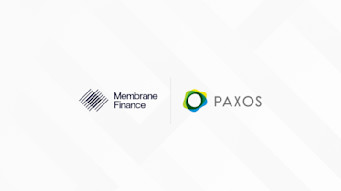
Charting a new course - Membrane Finance joins Paxos, focus shifts to USDG in Europe, EUROe operations to wind down

Paxos to Acquire Finnish E-Money Institution Membrane Finance
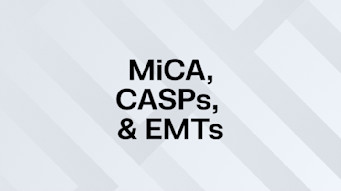
MiCA, CASPs, and EMTs – How EUROe Helps Exchanges Transition into MiCA
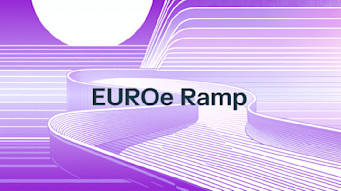
Membrane Finance Launches EUROe Ramp: Fiat Connectivity for Blockchain Protocols

Introducing Bridged EUROe to Scale Euro Liquidity
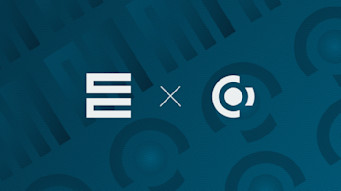
Membrane Finance Brings the First Stablecoin to Concordium

EUROe To Integrate Concordium – A Permissionless Blockchain with Built-In IDs
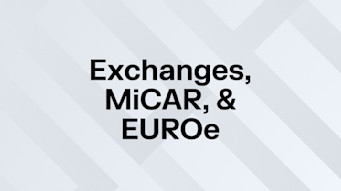
EUROe Helps CASPs & CEXes Stay MiCAR-Compliant
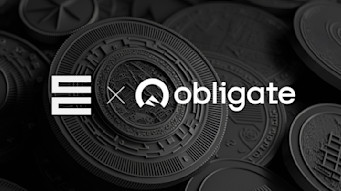
Obligate and Membrane Finance Join Forces to Revolutionise Debt Financing
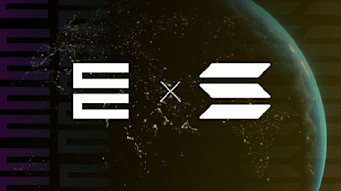
Membrane Finance Brings the First Euro Stablecoin to Solana – Along With Card Payments

Mt Pelerin partners with EUROe to offer zero-fees on/off-ramp
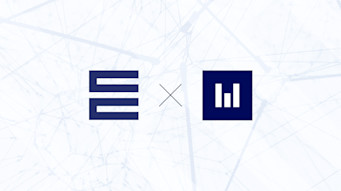
EUROe Is Now Available through Woorton’s OTC Infrastructure

Lamar Olive Oil's Innovative On-Chain Bond Issuance Using EUROe

deltaDAO Facilitated a Data Market Transaction Using EUROe

Membrane Finance Launches EUROe Account API to Bridge Traditional and Blockchain-Based Economies
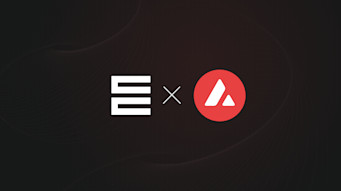
Membrane Finance Launches the First MiCA-Compliant Stablecoin, EUROe, on Avalanche
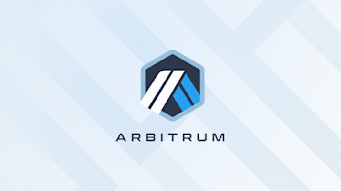
Membrane Finance Launches EUROe on Arbitrum One

Membrane Finance Launches EUROe on Polygon

deltaDAO, Membrane Finance, and Polygon Labs bring EUROe to the Gaia-X Web3 ecosystem as main settlement token
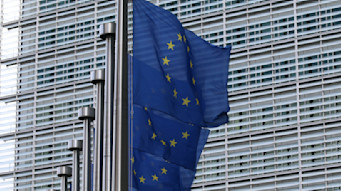
Stablecoin regulation within the EU remains clear amid uncertainties in the US
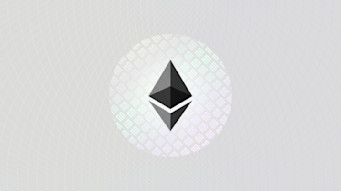
Membrane Finance launches EUROe on Ethereum

Membrane Finance Announces Integration with Fireblocks to Enhance Operational Security of the EUROe Stablecoin

Equilibrium backs Membrane Finance in building core EUROe systems
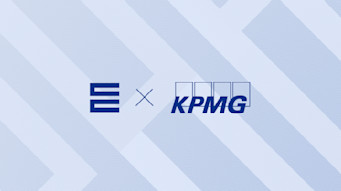
Membrane Finance appoints KPMG as its internal auditor

Runtime Verification completes a smart contract audit for the first EU-based regulated stablecoin EUROe
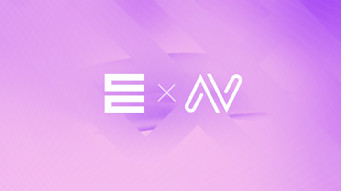
Nordic Law acts as a legal advisor to Membrane Finance

Membrane Finance Announces the First Regulated Euro Stablecoin EUROe and Raises a Seed Round

What are Stablecoins?
